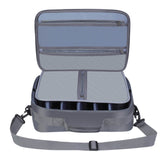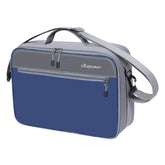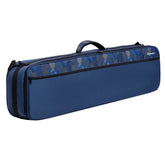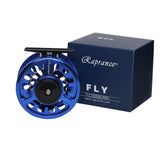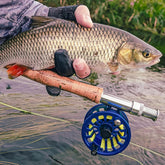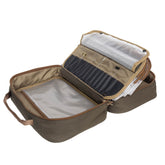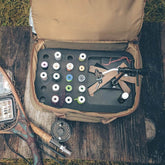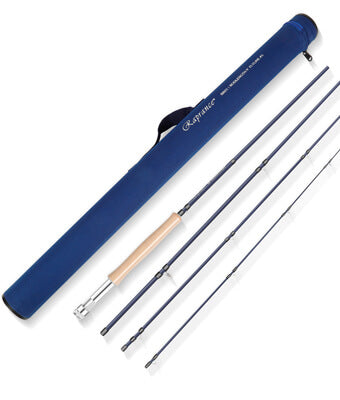Fly Reel: A Guide to Size, Maintenance, and Top Brands
Selecting the right fly reel can significantly enhance your fishing experience. Understanding the ideal size and type of fly reel for your fishing needs is crucial to optimizing performance on the water. I have found that knowing how to maintain my reel not only extends its life but also ensures smooth operation when I need it most.

When evaluating fly reels, I often consider the differences between high-end brands and more accessible options. These brands can influence the durability and performance of my fishing equipment. Additionally, I weigh the pros and cons of manual versus automatic reels to determine what best suits my style and needs.
In this post, I will share practical tips on maintaining your fly reel, highlight some top brands, and provide a helpful size guide. Whether you are just starting or looking to upgrade your gear, this information can help you make informed decisions in your fly fishing journey.
Essential Characteristics of Fly Reels

When selecting a fly reel, it’s crucial to consider various factors that impact performance and usability. Key characteristics include size, design features, and drag systems. Understanding these aspects will enhance your experience on the water.
Fly Reel Size Guide
Choosing the right reel size is essential for achieving optimal performance. Fly reels are typically measured in weight categories, which usually range from 1-3, 4-6, and 7-9. The reel size should match the size of the fly rod and target species.
For example:
| Reel Weight | Recommended Rod Weight | Target Species |
|---|---|---|
| 1-3 | 1-3, Light | Small trout, panfish |
| 4-6 | 4-6, Medium | Trout, bass |
| 7-9 | 7-9, Heavy | Steelhead, salmon |
A larger arbor design provides a smoother line retrieval and reduces memory in the line. When selecting, ensure the reel balances well with your rod for optimal casting.
Design and Engineering
The design of a fly reel impacts its durability and overall performance. Many high-quality reels use CNC machined components, which offer precision engineering that enhances functionality.
I look for reels made from lightweight yet durable materials like aluminum. This ensures longevity while maintaining ease of handling.
Features like a comfortable grip and easy-to-use drag knob enhance the user experience. Additionally, smooth, reliable ball bearings in the reel can significantly improve performance during fish strikes or maneuvers.
Drag Systems and Performance
The drag system is a critical feature that determines how the reel manages line tension during a catch. A smooth drag system is essential for preventing breakage and ensuring the angler can successfully land fish.
I prefer reels equipped with adjustable drag knobs, allowing for precise control over resistance. A good drag system distributes pressure evenly, providing smooth action. Some advanced reels use sealed drag systems to prevent dirt and water ingress, ensuring consistent performance.
Choosing a reel with adequate drag strength is vital, particularly when targeting larger species. A well-designed drag system can mean the difference between landing a trophy fish and losing it.
Maintaining and Enhancing Your Fly Reel
Proper maintenance is essential to extend the life of your fly reel and enhance its performance. Regular care keeps it in optimal condition, ensuring smooth operation on the water.
Fly Reel Maintenance Tips
To ensure your fly fishing reel lasts, I recommend a few key maintenance practices:
-
Clean After Use: Rinse your reel with fresh water after each use, especially if I’ve fished in saltwater. This prevents corrosion and buildup.
-
Dry Thoroughly: Before storing, I always make sure the reel is completely dry. Excess moisture can lead to rust and damage.
-
Lubricate Moving Parts: I apply a light oil to the drag system and other moving parts regularly, following manufacturer guidelines. This keeps the mechanism smooth.
-
Inspect for Wear: Periodically check for any signs of wear or damage. Replace worn parts to maintain functionality.
-
Store Properly: I store my reel in a cool, dry place. Using a protective case can safeguard it from dust and impacts.
Following these steps will help maintain the effectiveness of your fly reel and ensure a successful fishing experience. Investing in quality maintenance can uphold a lifetime warranty, giving me peace of mind.
Types and Brands of Fly Reels
I will discuss notable fly reel brands and the differences between manual and automatic fly reels. Understanding these elements can help in making informed decisions for your fly fishing experience.
High-End Fly Reel Brands
Several brands stand out in the high-end fly reel market, known for their quality and performance. Brands like Abel, Hatch, and Tibor are noted for their precision engineering and durable materials.
- Abel: Renowned for handcrafted reels, often featuring unique designs and finishes. They offer models with a lifetime warranty, ensuring long-term use.
- Hatch: Known for innovative drag systems that provide smooth line retrieval. Their reels are built with corrosion-resistant materials, ideal for saltwater environments.
- Tibor: Popular among saltwater anglers, Tibor reels are designed for high performance and reliability.
Investing in these brands can enhance the fly fishing experience with their durability and functionality.
Comparing Manual and Automatic Fly Reels
When choosing between manual vs automatic fly reels, it is essential to consider the fishing context.
Manual fly reels require the angler to control the line retrieval actively. They are usually lighter and offer more control during the fight with a fish. This type suits experienced anglers who prefer to engage more deeply with the fishing process.
Automatic fly reels, on the other hand, simplify the experience by automatically retrieving the line. This feature saves time and effort, making it a good choice for beginners or those focusing on fast-paced fishing.
Understanding each type’s advantages can guide you in selecting the right fly reel based on personal preferences and fishing styles.

